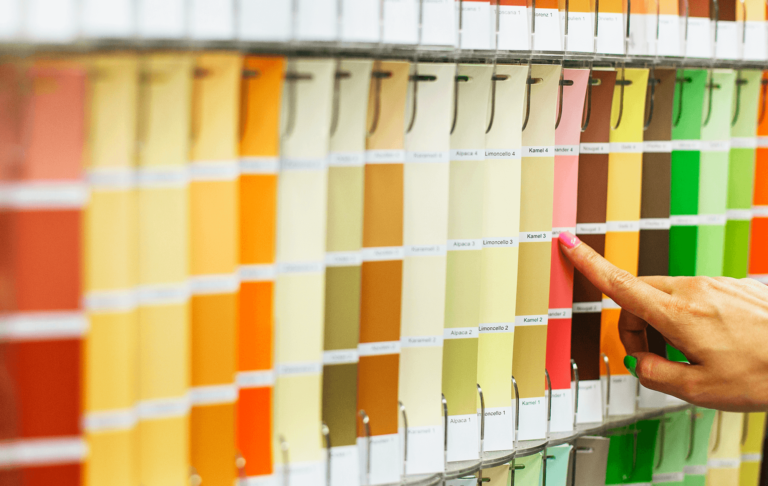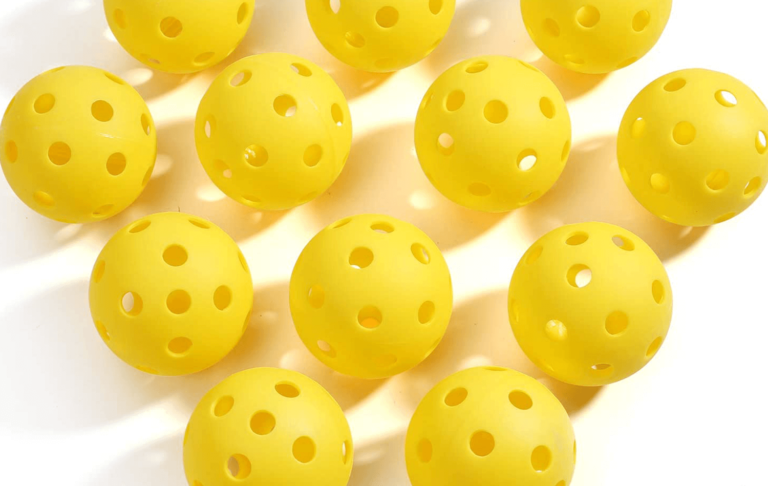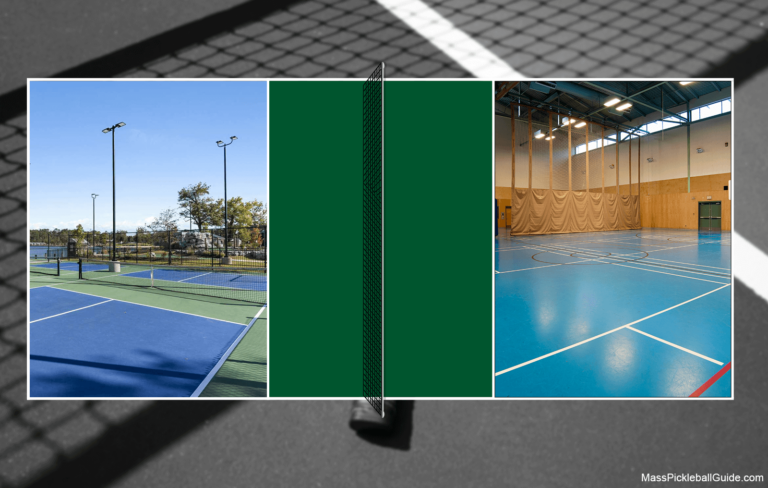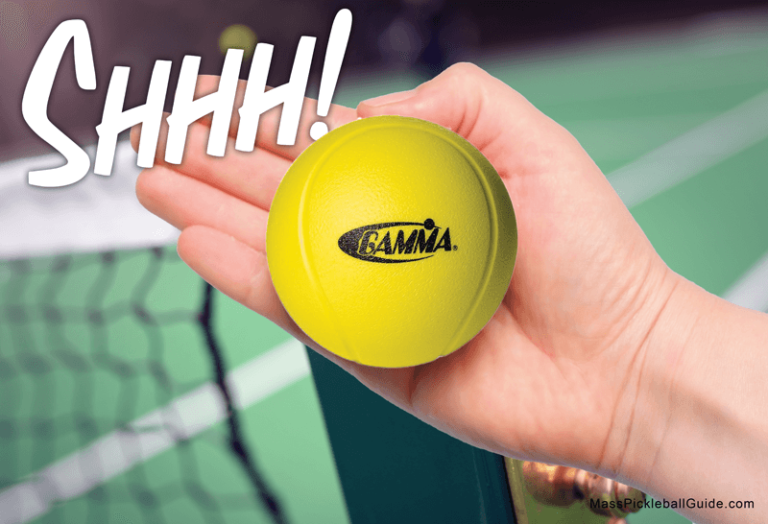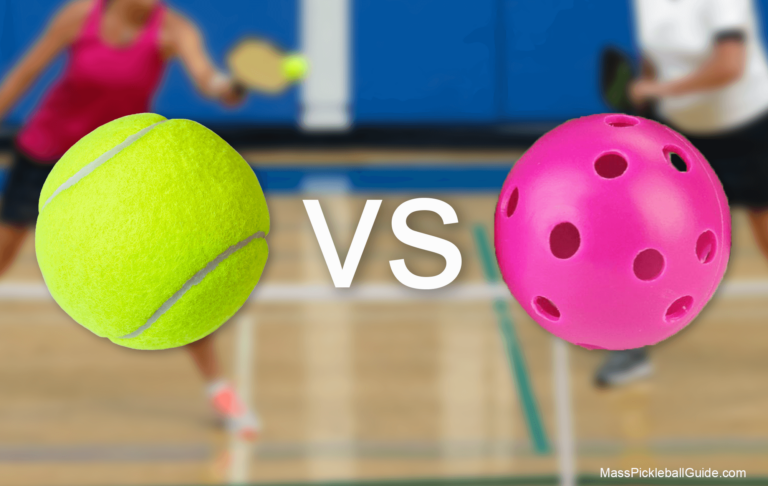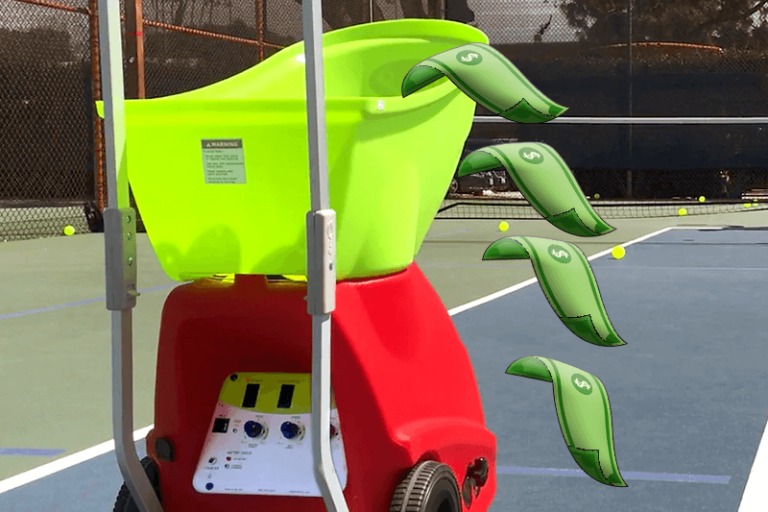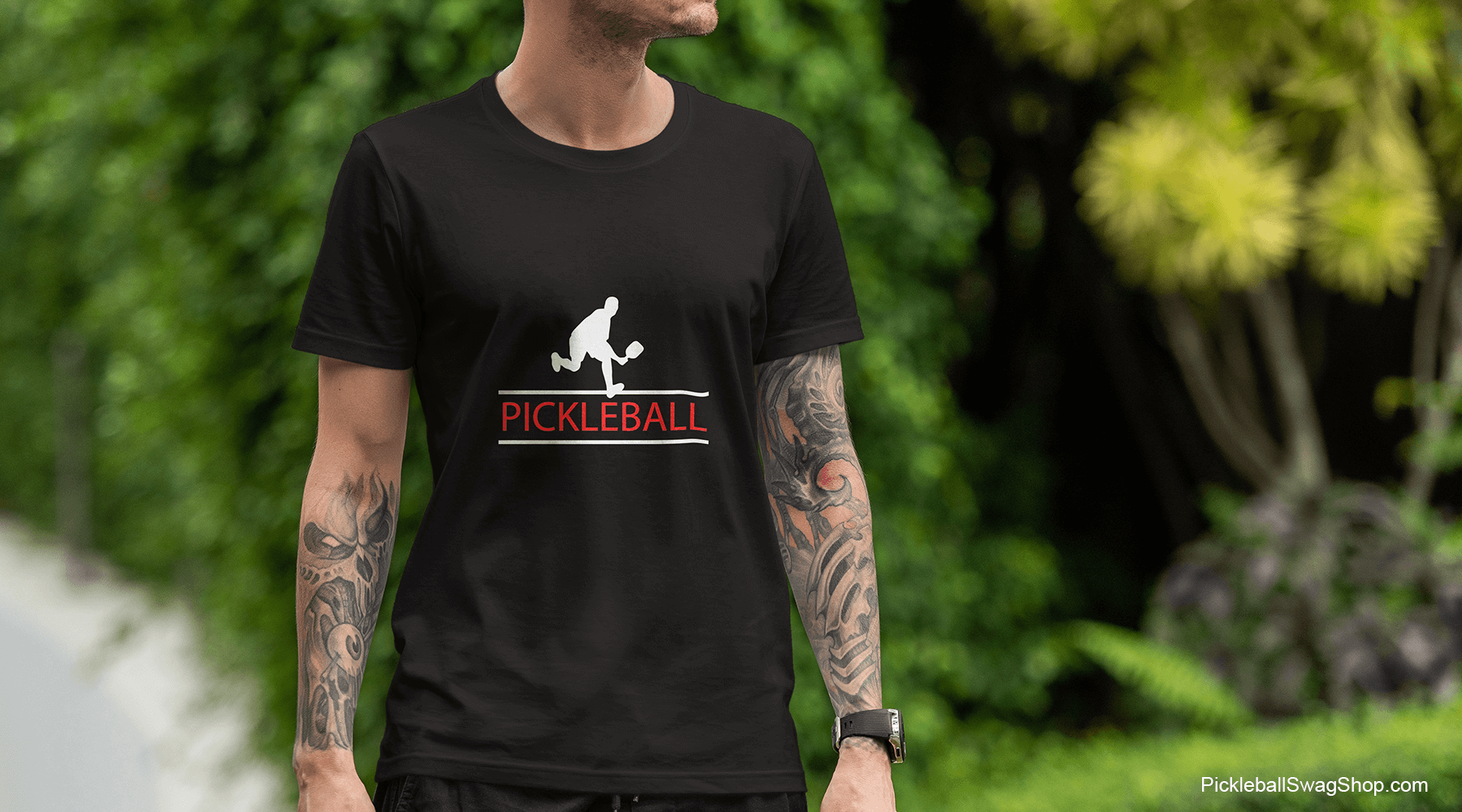The science of the pickleball: what is a pickleball made of?
The science of the pickleball
A pickleball (or is it “pickleball ball”?) is made of a lighter plastic material than a standard wiffle ball and comprises various levels of thickness and holes that are drilled in.
Pickleball balls are made of plastic, resin, or polymer. The determining factor of the construction of a pickleball is dictated on its intended use: indoor or outdoor play. Balls made of softer materials (indoor balls) are easier to control but don’t travel as far or as fast as balls made with harder resins and plastics (outdoor balls).
The pickleball must meet certain specifications according to the rules of pickleball (i.e., our friends at USA Pickleball Association).
Specifications of a pickleball
Well, you asked and here are the exact specifications a pickleball.
You must be wondering…
Do I really need to know all this technical crap about a ball I’m gonna whack around and never think about?
No, you don’t. Any pickleball nowadays will be of regulation size, weight and hole specifications. Years ago, you would have to be careful but unless you fall for a deal for a buck of balls at a dollar store for $1 you can be assured your new pickleballs have passed the test.
The making of a pickleball
The making of a pickleball is like most other plastic hollow objects and the science has been around since the 1950s – longer than the sport of pickleball itself. A single heated piece of plastic is injected into a mold which is then rotated slowly. As it rotates the plastic disperses and sticks to walls of the pickleball mold.
If the pickleball is made from a resin, as opposed to plastic, it does not need to be heated and the resin will self-cure; it still rotates slowly like the plastic pickleball version.
Many outdoor pickleballs don’t have a seam, but a slight seam ridge is permitted, provided it does not affect the ball’s flight characteristics. Indoor pickleballs usually consist of two halves fused together and often have a seam.
Pickleball ball variations
There are two major varieties of pickleballs, indoor pickleballs and outdoor pickleballs, as you may have figured out by now.
The differences between each one is remarkably clear, and every pickleball player should know the distinctions.
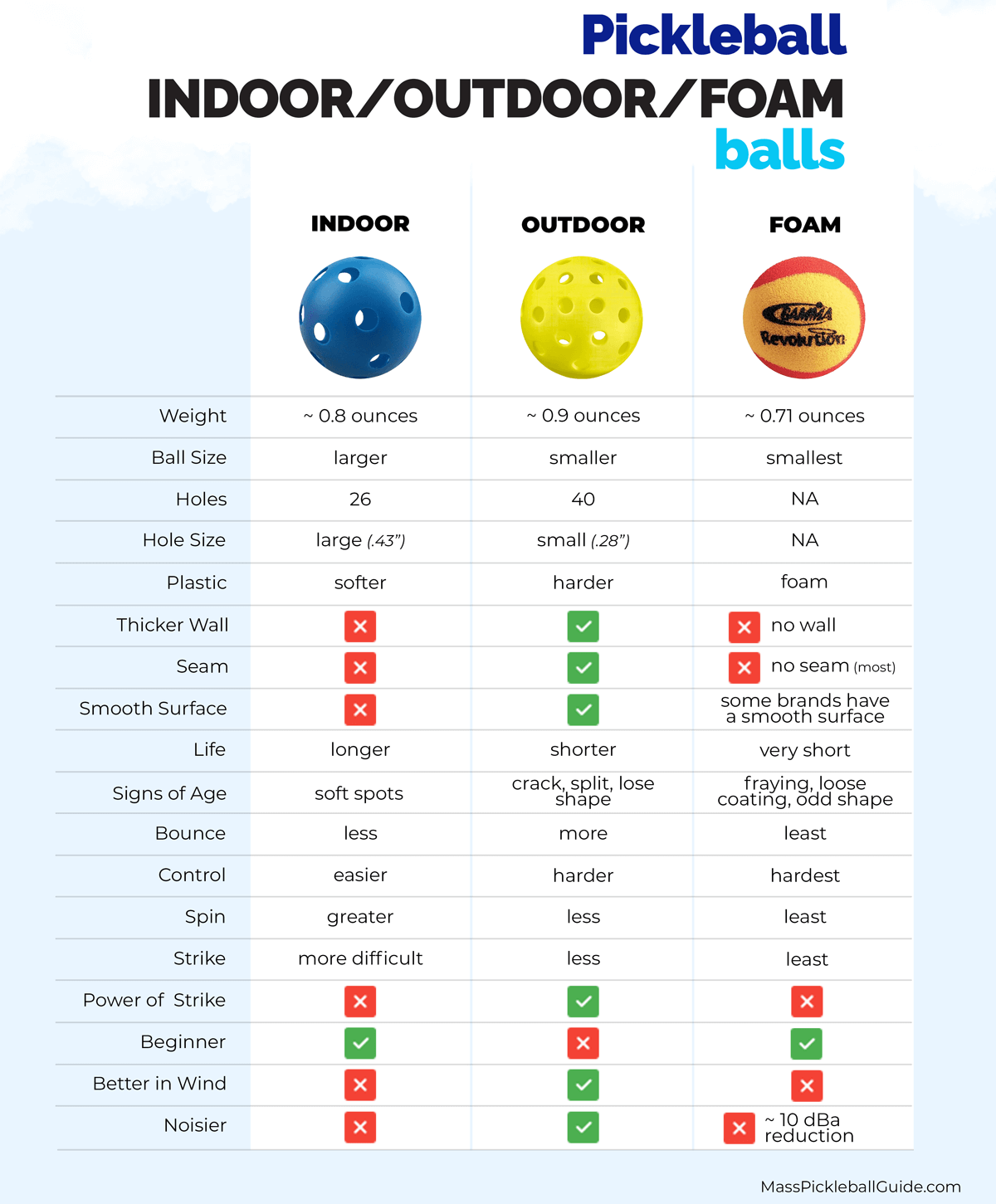
The differences between each of these two types of balls is very important – even for a beginner pickler!
Do indoor and outdoor pickleball balls really make a difference?
What an indoor pickleball is made of
Indoor pickleballs are made of softer plastic than outdoor balls. The main reason is that indoor court surfaces are not as hard as an outdoor court, meaning the ball won’t bet beat up as much. Indoor pickleball court surfaces can be made from wood, tiles, or various synthetic materials. This affects the ball’s reaction on the court.

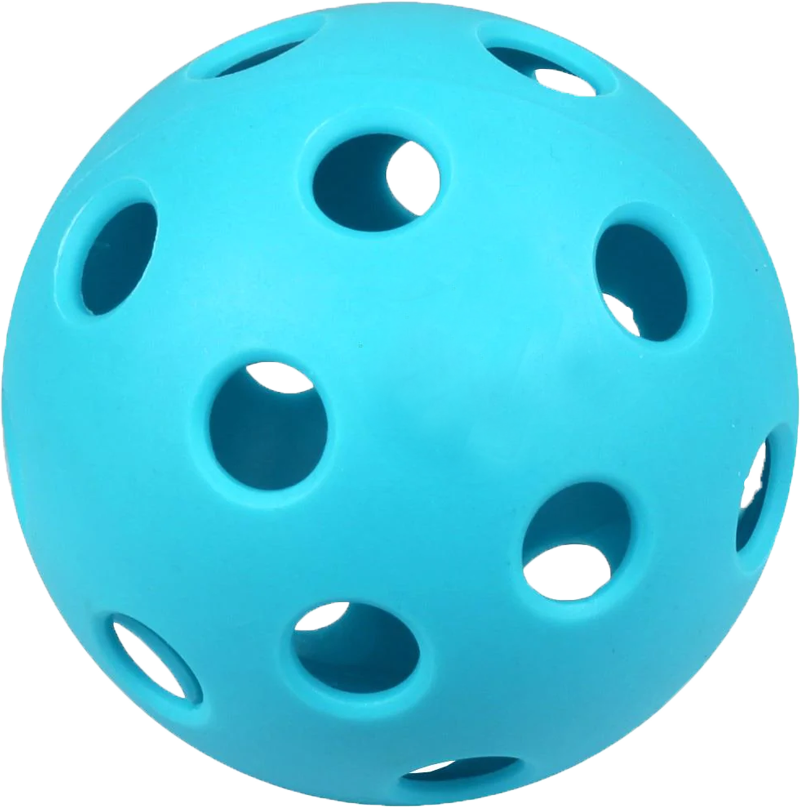
Indoor pickleballs have larger and fewer holes (wind is not an issue indoors), usually about 26. These balls are less likely to break and typically last more rounds than an outdoor ball. They are easier to control, but it can be challenging to strike them as hard. Rallies tend to last longer than outdoor games in an indoor setting.
In addition, indoor balls are ever so slightly larger than outdoor pickleballs; you cannot really notice with the naked eye.
But that’s not all…
They are also a little bit less bouncy than an outdoor ball. This gives players more control during a serve and volley.
Weight matters: an indoor ball weighs about 0.8 ounces, slightly less than an outdoor ball (i.e., 0.9 ounces). A lighter ball allows players to generate more force meaning longer volleys.
How about an outdoor pickleball?
Outdoor pickleballs are — yes, believe it or not — meant only for outside courts.
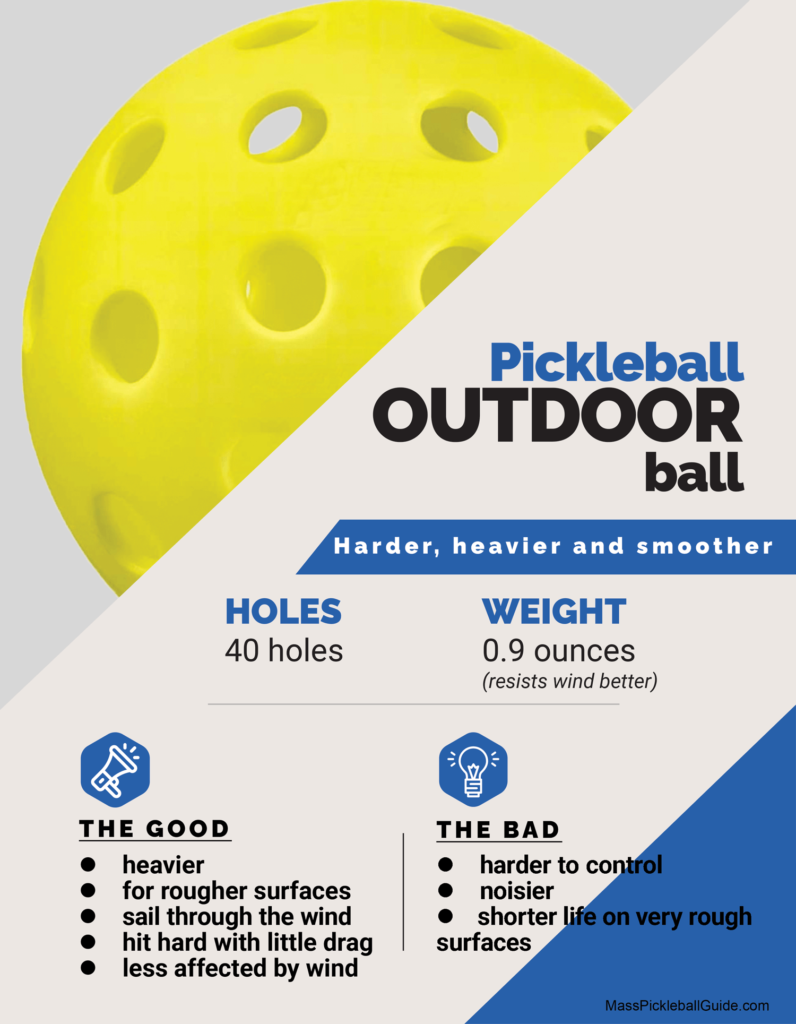
Because you’re more likely to be playing on a hard rough surface, outdoor pickleballs can handle a bit more wear and tear.
Outdoor pickleballs are made of heavier, harder plastic enabling them to last longer even in harsh environments. The balls have a thicker wall than indoor balls and usually don’t have seams.
The outdoor balls have smaller holes (40 of them), it is easier to hit them hard, and they are not likely to be affected by the wind – because of the hole design.
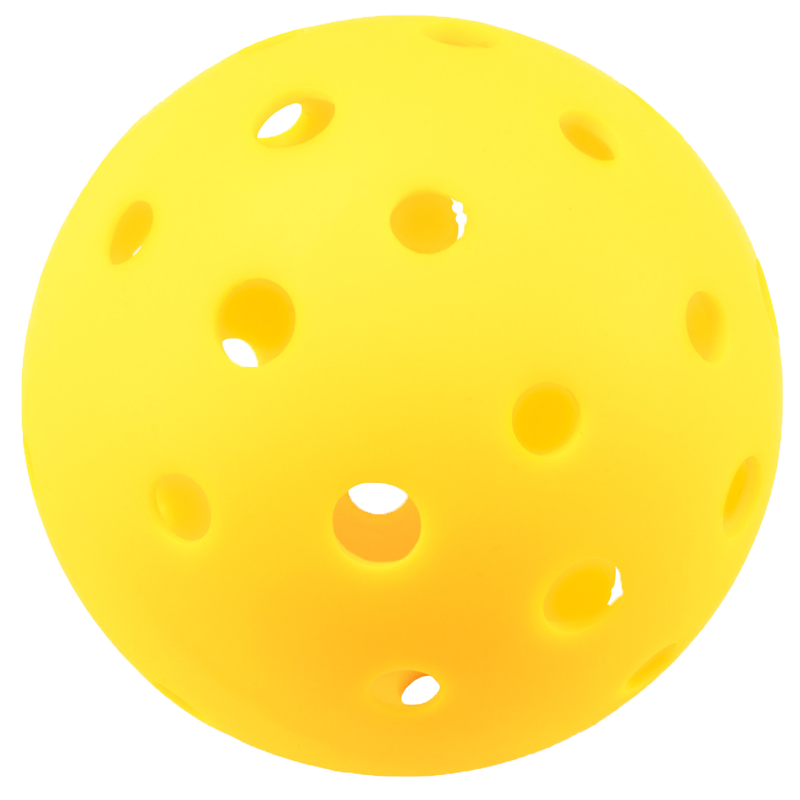
An outdoor pickleball weighs 0.9 ounces, making it only slightly heavier than an indoor pickleball. However, that little difference in weight can completely overturn the game.
A heavier ball makes it possible for players to have a lot more power behind hits, which encourages a faster, more physical game. Since they’re designed with outdoor use, the added weight provides less of an effect in the face of harsh winds and winter pickleball.
Outdoor balls are also louder than indoor balls.
How long will a pickleball last?
Pickleballs will eventually crack, warp, or break and become unplayable. The lifespan of the ball depends on the quality of he ball, using the correct ball (i.e. indoor vs. outdoor), court surface, and how hard they are played. They are a bit harder in cold weather than in hot weather as temperature affects the plastics/resins.
You’ll know when it’s time to replace your pickleball. Folks always have spare balls as buying in bulk saves tons of money and they are not that expensive. You’ll find people replacing their pickleballs about every 20 games or so to make sure they’re playing with optimal equipment.
We highly recommended the ONIX Fuse G2 (with a 5-star rating) as it is three times as durable as just about any ball on the market. They respond consistently and are made with a proprietary seam welding so they resist splitting and cracking. Ask around – it’s a preferred vendor and ball.
Does the color of a pickleball matter?
Pickleball ball color is up to you!
Confused about what color your pickleball ball should be?
You want the pickleball ball to stand out and be in contrast to your surroundings – especially the color of the court. You would not want to use a blue pickleball on a bright blue pickleball court. Best choice for pickleball color is bright yellow.
The best pickleball ball color is a different color than the court. If you’re playing at an indoor court and want to be able to play in low light conditions, then a white ball would be best.

